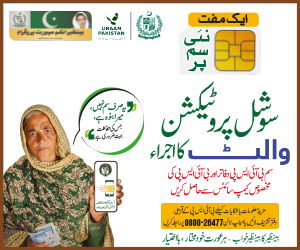Coins of Time
The elders used to say that time is a tyrant—it never comes back once it’s gone. We laughed, played, and passed those years without realizing their worth. Now, when I look back, my heart aches for those days when even a broken paisa or a worn-out coin felt like a treasure.
My grandfather often told me that a single paisa could buy coriander and mint. With just a few pennies, schoolchildren returned home with papad and sweets. If a child ever had an aath-anni coin, he instantly became the neighborhood hero. In those days, money had such power that holding a ten-rupee note made one feel like a nobleman. And today? If a ten-rupee note appears in our pocket, we feel embarrassed even to hand it to a shopkeeper.
The Rupee of the ’60s and ’70s
The ’60s and ’70s were the eras when a single rupee could buy an entire household’s groceries. Eight annas fetched you curry, four annas gave you yogurt, and two annas brought home potatoes. A five-rupee note, given as a wedding gift, was a source of pride and joy. Today, even if we hand over five thousand, the receiver silently wonders: “Is that all?”
The Fragrance of the ’90s
By the ’90s, things had started to change, yet life still carried its fragrance. I remember my pocket money—just two rupees a day. I saved them for months until I had 115 rupees, and with that, I bought a CA Company hardball cricket bat. That was perhaps the happiest moment of my childhood.
Today, the same bat costs anywhere between 64,000 and 180,000 rupees. But the truth is, the value wasn’t in the wood—it was in the dream it carried. You can spend millions on bats today, but you’ll never buy back that joy.
Essentials and Bills
In those days, petrol was just six to eight rupees per liter. One could roam the entire city on a motorbike without worrying about expenses. Electricity bills were 150 to 200 rupees—parents paid them with contentment.
Sugar was five rupees a kilo, flour two and a half, ghee twelve, vegetables mere pennies. Even meat was not beyond a poor man’s reach—it was a reality, not a luxury. Cinema tickets cost two to five rupees, and happiness was as simple as watching a film, eating shaved ice, and laughing with friends.
What Was the Real Wealth?
The real treasure wasn’t the rupee’s strength or the low prices of goods. It was the peace and sincerity of life. Those were the evenings when, during power cuts, entire neighborhoods gathered under the open sky with woven cots. Those were the nights when parents told stories, and children fell asleep with dreams in their eyes.
A single popsicle worth one anna was shared by five friends—and no one cared who got the bigger piece.
A Message for Today’s Generation
For today’s youth, these may sound like fairy tales. For them, happiness is incomplete without branded clothes, expensive gadgets, and five-star meals. But we know—true joy was hidden in those tiny moments. When a pocket held four annas worth of candy, it felt like conquering the world.
Time has changed. Prices have soared beyond imagination. Things have become rare. Yet the rarest treasure today is love and sincerity in relationships. Everything has become expensive, but love has grown cheap. That’s why the younger generation must understand—real happiness doesn’t lie in money or possessions, but in simplicity, affection, and human warmth.
A Friend’s Words
Just a few days ago, I met an old friend. He held up a ten-rupee note in front of some children and said with a smile:
“Once upon a time, this note was a symbol of royalty for me.”
The children laughed and replied:
“Uncle, this doesn’t even buy us a candy anymore.”
His eyes welled up as he softly whispered:
“Yes, my child. It may not buy a candy today… but once, it used to buy an entire world of happiness.”






Comments are closed, but trackbacks and pingbacks are open.